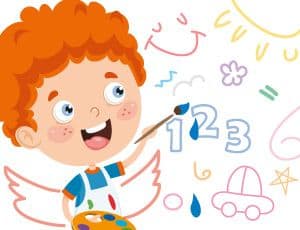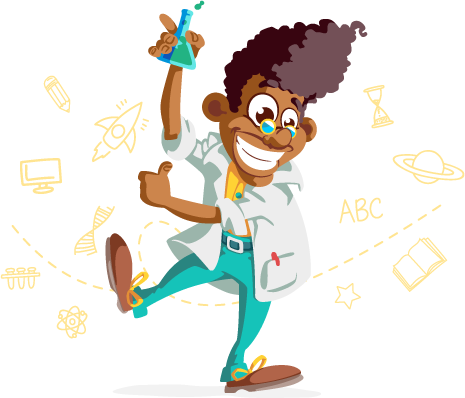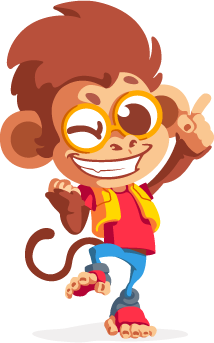Escola Games | Jogos Educativos
https://www.escolagames.com.br
Teacher's support sheet

Cool Board
The ‘cool board’ is an interactive space to use your creativity. Choose stickers, colors, numbers, and letters to make an exclusive drawing. You can use your favorite colors to make your favorite things!

Teacher's tips
Level of education: Elementary School - Early Childhood Education
Age: 04 to 07 years old
Offering children varied resources is a way to stimulate their cognitive and expressive development. COOL BOARD brings several resources for the child to draw, color and create, in addition to working with reading and writing concepts! Now each of your students can have their own digital whiteboard! [FIM-DICA]
Learner outcomes
Know the letters of the alphabet;
Differentiate the letters of the alphabet;
Knowing the alphabetical order of writing the alphabet;
Know the geometric shapes;
Improve visual discrimination ability;
Establish relationships between objects with a flat geometric figure, observing their characteristics;
Reinforce classroom content;
Develop creativity;
Develop the capacity for expression through drawing;
Develop reading and writing skills;
Memorize the conventional writing of the worked words and associate them with the writing of other words;
Develop motor skills;
Develop logical reasoning;
Teachers' goals
Enable the student to identify and differentiate the letters of the alphabet;
Compose a facilitating and pleasant environment to work on the contents covered in the game: letters of the alphabet, numerical sequence from 1 to 9, colors and geometric figures: square, rectangle, circle, triangle, pentagon and hexagon;
Working with flat geometric shapes;
Stimulate and encourage creativity;
Apply activities that develop children's logical reasoning;
Work hand-eye coordination with mouse skills;
Appreciate the visual arts.
Enable integration with people and environments.
Fix content worked in the classroom;
Suggestions of approaches for the teacher
(Suggestion 1) While working with geometric figures, encourage students to look around for objects that have the same shapes as the geometric figures presented in the activity.
(Suggestion 2) Make cutouts in magazines assembling geometric shapes;
(Suggestion 3) Draw shapes using objects, such as: circles using cups, squares using milk cartons, etc.
(Suggestion 4) Make a collage of grains inside the geometric shapes.
(Suggestion 5) Build a panel of drawing shapes using geometric shapes.
(Suggestion 5) To work with the alphabet, enrich your proposal by asking students to say a word that has the letter that appeared in the bubble as its initial. Students will also be able to write the letter on a sheet and then, as a record of the activity, write a word with each letter they wrote down.
(Suggestion 6) Build a memory game using drawings of numbers, colors, words and geometric shapes;
(Suggestion 7) Choose some vowels and put them on the board, then ask the students to choose a word that starts with that letter and write it in their notebook.
(Suggestion 8) Play hangman.
(Suggestion 9) Combine two different types of objects, such as five counting bears and a domino that shows five dots.
(Suggestion 10) Work until you show the amount with more than two types of objects (as seen in the photo). Have many different items available for activities such as dice , dominoes , number magnets , bears , counting cards , cubes and number cards.
(Suggestion 11) Print the vowels and ask the students to use their imagination to color them. Use crayons, markers, gouache paint, coloring pencils.
(Suggestion 12) Gather the words of the whole class and propose that they separate them according to different criteria: words with the same number of letters, that start with the same letter, that end with the same letter, etc;
More about the content
Thinking about freeing children's creation from stereotypes, developing children's perception and improving their ability to draw, here is a small Project:
Project – DESIGNING THE WORLD!
Objectives: improve drawing, free yourself from concepts, be confident when drawing and feel satisfied and confident with the final result;
Duration: 1 trimester - 02 times a week in 30' modules
Objects to explore: boat, tree, cat, fish, aquarium, boy's body (work in that order).
Steps: Attention! Choose one object at a time to go through all the steps. Only after completing the 6th step can you change the object to be drawn.
- Distribute ½ sheet to each child and ask them to draw the object;
Didactic guidance: compare, expose, comment, let everyone comment on your drawing.
- Distribute ½ sheet and draw the same object as in step 1, but changing position. Eg: if you drew the object from the side, draw it from the front...
Didactic orientation: compare with the first drawing, display it on the side, comment, analyze the changes, the commitment and time spent on the 2 drawings, the result and the pleasure.
- Distribute ½ sheet to recreate the drawing from step 2, changing color, shape and size.
Didactic guidance: compare with the first and second, display to the side, analyze the changes, the effort and time spent on the three drawings, the result and the pleasure that the activity generated.
- Distribute ½ sheet and invent an object according to the teacher's request, creating a new object that doesn't exist yet, that you invented, that is yours, that you created.
Suggestions for this step: the house of an ET, a boat that also dives, a flower that no one has ever seen, a flower that talks, a flying cat, etc..
Put up a panel in the room with various models (of the design being worked on) taken from magazines, books, other children's drawings, art books, games, newspapers, etc. (this assembly should only contain drawings of the object you are working on since the 1st stage).
Distribute ½ sheet and ask them to draw the same object using: the crayon lying down, wet chalk, colored pencils, gouache with the finger, etc.. Do not let them draw like the first drawings. Interfere using all the resources already used before.
Other suggestions:
· Draw the same object as seen from a window on the top floor of a very tall building.
· Draw the object as if you were using binoculars and very close. (Take binoculars to get to know and explore first)
· Drawing the object from the side, front, back, walking, dressed up, in the mirror, dancing, doing gymnastics, trying to give movement to the object with different resources, etc. (adapt according to the object to be worked on).
